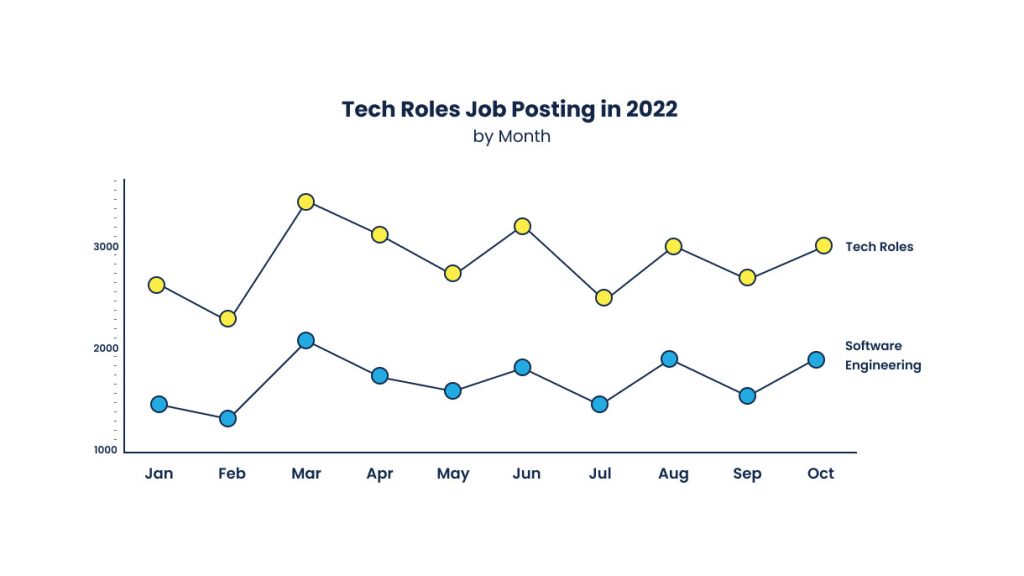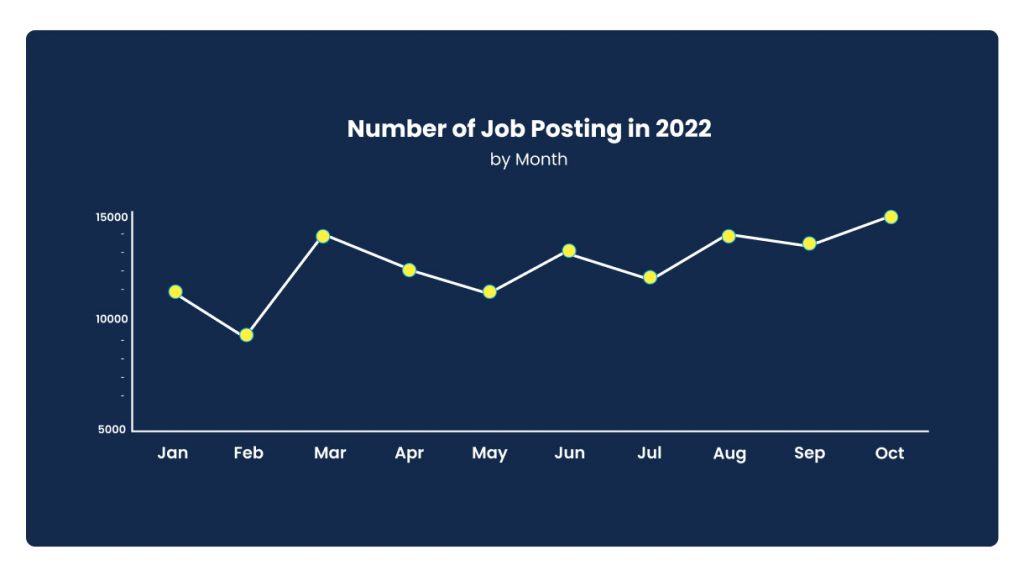Hiring during a downturn: Smart strategies employers in Southeast Asia should know


A bumpy ride lies ahead for Southeast Asia’s businesses in 2023. As global tech stocks tumble and inflation rises, fears of a recession loom large. Understandably, the region’s tech industry is tightening its collective belts, with the likes of Amazon, Apple, and Shopee announcing a hiring freeze.
A hiring freeze might seem like the safest course of action, especially if you’re a startup or smaller enterprise. But this may also mean you miss out on a rare window of opportunity to snag talent. An economic downturn unlocks rare opportunities to hire previously unavailable talent.
With competitors downsizing, the pool of promising talent in the market is expanding — and companies in a solid financial position can seize the chance to get them on board. Here’s why hiring during this downturn can be a smart investment, along with five smart strategies to guide your recruitment.
Table of Contents
ToggleIn a Harvard Business School study of the last three recessions, 9% of the 4,700 companies studied emerged from the recession performing better, thanks to their “progressive” focus. This means they continued to make strategic investments – including in talent – rather than simply freezing hiring, leaving them poised to thrive in the long term.
Given Southeast Asia’s shortage of tech talent, companies that have A-players on the team will have the advantage in a fast-digitalizing landscape. Despite the current downturn, demand for tech talent remains robust. Glints’ internal data shows that tech-related job postings slumped by 17% in July 2022 but swiftly rebounded in August.

While countries like Singapore and Vietnam have seen dips in hiring demand in Q3 2022, overall job postings across SEA continued to grow month-on-month.
“We’re seeing the strongest growth in tech, sales, marketing, and business development roles,” shares Patricia Setyadjie, Head of Business in Strategy & Market Expansion at Glints Indonesia.

How can you take advantage of the talent pool while keeping an eye on your finances? Here are five tried-and-tested strategies for hiring prudently from entrepreneurs and Glints experts.
As businesses grow, inefficiencies can build up and slow down your operations. Before you add to your headcount, it’s crucial to review your current team’s job scopes, find out which processes can be streamlined or automated, and then identify what new talent you need to enhance your productivity.
“As we prepare for a global recession, we’ve been looking into reorganization in the past three months,” shares Logan Tan, CEO and co-founder of B2B procurement startup Eezee. “We’re checking for inefficiencies in every employee’s job role and seeing whether they’re delivering the value we need them to deliver.”
With fast-growing operations in Singapore, Malaysia, Indonesia, and the Philippines, Eezee is shifting its hiring focus to automation. “Once you hit a certain level, you need to start looking at processes and preparing yourself for scale,” Logan advises. “We’re going to invest a lot more in improving and automating processes, so our people can do higher-value activities.”
This will create a need to hire new types of talent – for instance, software engineers and data scientists who can help you implement automation, track processes, and mine insights from data.
With budgets tightening, you’ll likely be hard-pressed to fulfill all the hiring needs on your wishlist. It’s helpful to start by narrowing down your immediate hiring priorities.
This requires a clear view of your long-term business goals based on your current stage of growth. “You first need to map your business focus for the next year or two. Then, identify the manpower needed to grow towards that focus,” explains Patricia Setyadjie, Head of Business in Strategy & Market Expansion at Glints Indonesia.
Setting the right focus is particularly important for startups, who may be sidetracked by goals that are non-essential to growth at the early stage. “You have to be very clear on your milestones at every stage,” emphasizes Geoffrey See, CEO and co-founder of Web3 startup Poko. “Many startups tend to start hiring for marketing and branding, which are not necessary if you’re still validating your product.”
Having clear milestones, he says, also enables you to decide when hiring is worth the expense. “Think about whether your growth depends on hiring more people to drive certain business objectives or invest in your product. If you won’t be able to hit the next stage if you don’t hire, then you need to make those hiring decisions.”
Like what you see? Subscribe to our newsletter to receive all our latest news and offers delivered right to your desk.
Hiring is one way to fill a skills gap in your team, but upskilling your current talent can be more cost-effective – especially amidst Southeast Asia’s tech talent crunch. A skills gap analysis can give you clarity on how wide the gap is and what solutions you can use to close the gap.
This entails measuring your team’s skill levels through assessments, surveys, or performance reviews, and comparing this data against the skills your company will need in the near future. Smaller skills gaps can be tackled internally with the right training, enabling you to focus on hiring for those that are too wide for your current team to fill.
“It’s expensive and time-consuming to find great talent,” reflects Charles Lee, co-founder of Vietnam-based edtech startup CoderSchool. “In Vietnam, it’s not uncommon for tech and HR leaders to have triple-digit churn rates on tech teams. Savvy leaders are putting effort into upskilling their best talent, which has the benefit of enhancing retention as well.”
For businesses in Vietnam, CoderSchool – an online coding school that strives to make coding accessible – is one avenue for upskilling as well as sourcing tech talent. “While hiring new talent remains a priority,” says Charles, “CoderSchool helps enterprises level up their tech competencies while strengthening employee satisfaction.”
Tighter hiring budgets may impact the salary increments you can offer, but that doesn’t mean you need to lose out on attracting talent. Beyond the dollar signs, you can continue to win over talent by crafting a meaningful set of non-monetary benefits.
Health insurance, according to Patricia, is one budget-friendly benefit that can set you apart as a caring employer. 90% of SME employees in Singapore say they want employers to provide healthcare coverage, and six in 10 would be more willing to join an SME that provides medical benefits.
Another key element is a strong workplace culture. With hybrid work on the rise, 88% of employers in APAC plan to prioritize enhancing their employee experience over the next three years. “Companies can build workplace culture by having a strong people team and support for bonding activities. This will boost your attractiveness to talent,” says Patricia.
Finally, Patricia emphasizes the importance of having a solid product that talent can connect with. Today’s talent wants to feel inspired by the work they do – a sense of purpose ranks among the top five factors that attract employees in APAC. Having a powerful brand story, along with well-defined goals and values, will give you the edge in hiring.
Remote hiring is on the rise in Southeast Asia, and for good reason. Hiring cross-border talent enables you to offer locally-adjusted salaries, reducing manpower and overhead costs. In fact, Glints estimates that companies can save up to 70% in expenses by hiring from more cost-conscious destinations like Indonesia, enabling you to expand your team without feeling the pinch.
At the same time, remote hiring opens the door to wider talent pools. Countries like Indonesia and Vietnam are emerging markets for remote tech talent, with highly skilled talent who have in-demand skill sets like software engineering, product management, and data science.
In challenging times, the right talent can take your business from surviving to thriving. Patricia sums it up aptly: “There’s economic uncertainty ahead – but we can get out of this by having the right people on the team.”
As one of Southeast Asia’s leading talent recruitment platforms, we’ve helped over 50,000 organizations globally with their team-building needs. Partner with Glints and we’ll help you find the right talent for your business. Start your hiring journey with us today.
Build your workforce from anywhere. Start your remote hiring journey with Glints.
This article is brought to you by Glints TalentHub. Leading companies are actively building their borderless teams in Southeast Asia, Taiwan, and beyond. However, the prospect of going borderless can be daunting due to complex regulations and cultural ambiguities. With Glints TalentHub, you’ll have a dedicated team of in-market legal, HR, and talent experts by your side at every step of the way.
Glints TalentHub offers an end-to-end, tech-enabled talent solution that encompasses talent acquisition, EOR, and talent development. We empower businesses to leverage the strengths of regional talent efficiently to build high-performing, cost-efficient teams.
Schedule a no-obligation consultation with our experts to receive a tailored proposal today.
.